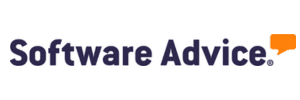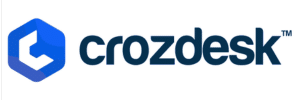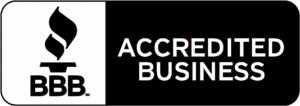Inventory management helps us prevent overstocking or stockouts, handle our finances efficiently, and, ultimately, gain a sense of control over our stock and our business.
In this article, we’ll explore various types of inventory management software and methods, helping you choose the best approach for your business needs. We’ll also discuss how the right all-in-one POS system can transform your retail inventory management process. Let’s get into it!
? Key Takeaways:
- Understanding different methods of inventory management is essential for controlling stock and running a business
- Each method has its unique advantages and is suitable for specific scenarios and businesses
- Certain POS solutions, like KORONA POS, offer a diverse array of inventory management and analytics tools, available with the click of a button
What is Inventory Management?
Inventory management encompasses all the processes and tools a company uses to control its stocked goods. It can involve using POS system software to build a Key Performance Indicator (KPI) dashboard, harnessing reporting and analytics tools, or even creating an inventory spreadsheet.
No matter your strategy, proper inventory management ensures that the right products are in the right place at the right time, striking a balance between supply and demand.
10 Types of Inventory Systems
The following is a breakdown of 10 popular types of inventory management, including when to use them and the pros and cons of each.
1. Perpetual Inventory System
Sure, we’re biased, but we think perpetual inventory systems are the strongest, most efficient tools for inventory management in the modern market. Here’s why: perpetual inventory systems continuously update inventory records as transactions occur, making them ideal for businesses that need accurate, up-to-date stock levels (and who doesn’t need that?).
? When to Use a Perpetual Inventory System:
- You need real-time inventory tracking for high-transaction businesses
- You manage multiple store locations that need synchronized inventory data
- You want automated restocking and precise stock control
Pros | Cons |
|
|
|
|
|
|
KORONA POS is an all-in-one point of sale system with award-winning perpetual inventory tools. You can manage your inventory like a pro right at the point of sale and trust that your information is accurate and up to speed at all times.
Inventory management headache?
KORONA POS makes stock control easy. Automate tasks and get a clear picture of your entire inventory.
2. Just-in-Time (JIT) Inventory Management
JIT inventory management is a system where businesses only order or produce inventory when it’s needed, reducing storage costs and waste. This method originated in the manufacturing industry and is commonly used by companies that rely on highly efficient supply chains.
? When to Use jit inventory management:
- You have limited storage space and need to minimize holding costs
- Your business operates on tight production schedules and needs materials exactly when required
- You have strong relationships with reliable suppliers who can deliver on short notice
Pros | Cons |
|
|
|
|
|
|
3. Materials Requirement Planning (MRP)
MRP, or Material Requirements Planning, is a computer-based inventory management system that uses sales forecasts and demand planning to schedule production and manage inventory. MRP helps manufacturers ensure that the right amount of raw materials and components are available when needed.
? When to Use MRP inventory management:
- Your business relies on complex production schedules and needs precise inventory planning
- You need to manage large amounts of raw materials for manufacturing
- You want to optimize ordering and production efficiency based on demand forecasting
Pros | Cons |
|
|
|
|
|
|
4. Economic Order Quantity (EOQ)
EOQ is a formula for determining the ideal number of items a company should order to minimize inventory costs, such as holding costs, shortage costs, and ordering costs. When used correctly, the formula can help businesses maximize value in the replenishment and ordering process.
? When to Use Economic order quantity:
- Your business experiences consistent demand for products
- You want to reduce ordering and storage costs while maintaining steady stock
- You need to calculate the most cost-effective restocking strategy for high-value inventory
Pros | Cons |
|
|
|
|
|
|
5. ABC Analysis
ABC analysis categorizes inventory into three groups based on value and usage frequency:
- A: High-value, low-sales frequency
- B: Moderate value, moderate frequency
- C: Low-value, high-sales frequency
? When to Use abc analysis:
- You want to prioritize high-value inventory for better management
- Your business has a diverse range of products and needs a structured inventory approach
- You need to improve inventory decision-making by focusing on key products
Pros | Cons |
|
|
|
|
|
|
6. First-In, First-Out (FIFO)
First-in, First-Out (FIFO) is an inventory management method that prioritizes selling or using the oldest stock before adding newer inventory. It helps businesses ensure that perishable or time-sensitive products are used first to reduce waste and maintain freshness.
? When to Use FIFO:
- You deal with perishable goods or products with expiration dates
- You want to ensure older stock is used first to prevent waste
- Your business follows natural inventory flow (e.g., grocery stores)
Pros | Cons |
|
|
|
|
|
|
7. Last-In, First-Out (LIFO)
Last-In, First-Out (LIFO) is an inventory management method where the most recently acquired stock is sold or used first. This approach is often used in industries where inventory costs fluctuate because it can reduce taxable income during periods of rising prices.
? When to Use LIFO:
- Your business deals with non-perishable items like construction materials
- You want to minimize taxable income during inflation
- You operate in an industry where newer stock is prioritized for sale
Pros | Cons |
|
|
|
|
|
|
8. Vendor-Managed Inventory (VMI)
Vendor-managed inventory (VMI) is a system in which the supplier is responsible for monitoring and replenishing stock at the customer’s location. Instead of the retailer or distributor placing orders, the supplier uses sales data, demand forecasts, and agreed-upon inventory levels to ensure optimal stock.
? When to Use Vendor-managed Inventory:
- Your business has frequent inventory turnover
- When demand forecasting is complex
- When retailers want to reduce their workload in managing stock
Pros | Cons |
|
|
|
|
|
|
9. Consignment Inventory
Consignment inventory is a supply chain arrangement where the supplier retains ownership of goods until they are sold by the retailer. The retailer only pays for the products once they are sold, reducing upfront inventory costs.
? When to Use consignment inventory:
- Your industry has uncertain demand (like fashion, electronics, or specialty goods)
- For testing new products with minimal financial risk
- When a retailer wants to offer a wide variety of products with limited shelf space
Pros | Cons |
|
|
|
|
|
|
10. Batch Tracking
Batch tracking is an inventory management system that groups products based on common characteristics, such as production date, expiration date, or lot number. It enables businesses to track inventory from production to sale.
? When to Use batch tracking:
- Your industry has strict quality control and regulatory requirements
- When traceability and recall management are priorities
- With perishable items with expiration dates
Pros | Cons |
|
|
|
|
|
|
Benefits of an Inventory Management System
Whether you’re a small business or a multinational corporation, implementing an inventory management system streamlines operations, reduces waste, and makes decision-making much easier. This is especially true when inventory management software integrates with POS systems for real-time updates and endless perks.
Benefit 1: Increased Efficiency and Accuracy
First, inventory management systems reduce human error by automating the whole range of processes related to stock tracking and order management. Barcode or RFID scanning, automated data entry, and real-time inventory updates eliminate manual counting mistakes (and save you loads of time).
Benefit 2: Reduced Costs and Waste
By optimizing inventory levels, businesses can minimize holding costs, prevent overstocking, and reduce product spoilage. Features like inventory forecasting and automated replenishment help maintain the right stock balance, so businesses only purchase what they’ll sell.
Benefit 3: Customer Satisfaction
When businesses track inventory properly, they ensure customers receive their orders on time and reduce the risk of backorders or stockouts. This improves customer trust and retention, which leads to increased sales and brand loyalty.
Features to Look For When Choosing Inventory Management Software
When choosing an inventory management system, look for solutions that offer real-time tracking, automated stock alerts, integration with POS systems, and robust reporting tools.
Here are the four essential features we recommend you look for when choosing inventory management software:
Feature 1: Real-Time Inventory Tracking
A sound inventory management system provides real-time tracking, allowing businesses to monitor stock levels instantly and accurately. KORONA POS is celebrated for its in-depth, real-time inventory tracking capabilities and tools, like automated counting and updated analytics features.
Feature 2: Automated Replenishment
Businesses can set reorder points to avoid stockouts with automated replenishment. A system like KORONA POS generates purchase orders based on historical data and demand forecasting and sets inventory boundaries, eliminating the guesswork in the ordering process.
Feature 3: Multi-Channel Integration
For businesses operating across various sales channels or locations, multi-channel integration ensures inventory is synchronized across online stores, physical retail locations, and warehouses. This feature lets you manage all your inventory from one system, making life easy.
Feature 4: Comprehensive Reporting and Analytics
Inventory management software should offer detailed reporting and analytics to give users insights into how their stock is performing, trends, and profitability. KORONA POS offers an incredibly diverse array of reporting and analytics tools accessible straight from the POS, helping users make data-driven decisions about their stock.
Best Type of Inventory Management for Retail
For retail businesses, the perpetual inventory system is by far the best choice as it provides real-time stock updates and improves inventory accuracy. Compared with manual or periodic inventory management styles, perpetual systems save businesses immense time and risk.
- Features:
- Real-time tracking of stock movements
- Seamless integration with POS systems
- Automated stock alerts and replenishment
- Improved demand forecasting
- Pricing optimization tools
- Why It’s Ideal for Retail:
- Prevents stock discrepancies and ensures accurate inventory records
- Enhances customer experience with faster fulfillment
- Reduces costs associated with stockouts and overstocking
- Suited to diverse, high-stakes retail environments, from bakeries to liquor stores
If you’re looking for the right perpetual inventory system, you should know that many of the inventory management types we listed above are accessible to users within KORONA POS. We think KORONA is one of the best perpetual inventory management tools on the market because you can do it all in real-time from one place.
Discover Advanced Analytics and Custom Reports
Speak with a product specialist and learn how KORONA POS can power your business needs.
Best Inventory Management System Software
Inventory management system software differs depending on the business type or industry to which each solution is tailored. The best inventory management software is automated, anticipates your business’s needs, and facilitates processes across your operation, saving you time and resources.
Here are our four favorite inventory management software on the market.
1. KORONA POS: Best Overall Retail Inventory Solution
KORONA POS overview
KORONA POS is a strong option for retail businesses. Its features, including automatic inventory tracking, low stock notifications, and integration with online stores, can help businesses optimize stock levels, reduce overstocking, and ensure they have the products customers need, making it a valuable asset for retail success.

Pros
- Unlimited free trial
- Processing-agnostic
- Excellent customer support
- Robust inventory tracking
Cons
- Steep learning curve
- Not ideal for complex menus
- No warehouse management
Korona POS Pricing
Core
$59/mo
- Various reporting
- Product data base
- Promotions and gift cards
Retail
$69/mo
- Barcode automation
- Supplier interface integration
- Real-time tracking
Adds-on
From $10 to $50
- KORONA Plus
- KORONA Integration
- KORONA Invoicing
Get started with KORONA POS today!
Explore all the features that KORONA POS has to offer with an unlimited trial. And there’s no commitment or credit card required.
2. Lavu POS: Best for Restaurants
LAvu overview
Lavu POS excels in the restaurant industry with advanced menu management, real-time inventory tracking, and KDS integration for enhanced kitchen communication.
Its mobile-friendly iPad-based system allows restaurant flexibility, providing tools for efficient order-taking and payment processing directly at the table. And its multi-location management and customizable reports make it highly versatile for growing businesses.
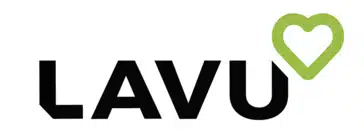
Pros
- Customizable menu and interface
- Excellent customer support
- Offline mode capability
Cons
- Steep learning curve for new users
- Occasional software glitches
- Limited payment processing options
Pricing
Starter
$59/mo
- Menu customization
- Basic inventory management
- 24/7 support
Growth
$129/mo
- Advanced reporting
- Inventory tracking
- Multi-terminal support
Optimize
Custom Pricing
- Multi-location management
- Custom integrations
3. Shopify POS: Best for eCommerce
Shopify overview
Shopify POS is a versatile system perfect for businesses needing to seamlessly integrate physical and online sales channels. It offers robust product management tools, including purchase orders, stock management, and barcode scanning, along with a customizable checkout experience.
Shopify POS is ideal for businesses seeking multi-channel sales with strong eCommerce capabilities.

Pros
- App integrations through the Shopify ecosystem
- Unified dashboard for online and in-store operations
- Mobile-friendly and multi-currency support
Cons
- Limited offline functionality
- Transaction fees with external payment gateways
- Higher hardware costs
Pricing
Basic
$29/mo
- Supports 10 inventory locations
- 24/7 support
- 2% charge for third-party payment providers
Plus
$79/mo
- $92 USD per month
- 5 additional staff accounts
- 1% charge for third-party payment providers
Advanced
$299/mo
- Reduced transaction fees
- 10 inventory locations
- 15 additional staff accounts
Plus
$2300/mo
- Custom reports
- Up to 200 inventory locations
- Global selling in 50 markets
4. Sortly: Best for Small Businesses
Sortly POS overview
Sortly is the best inventory management software for small businesses because of its intuitive interface, affordability, and mobile-friendly design.
It allows businesses to track inventory with visual organization, barcode scanning, and automated alerts without the complexity of enterprise-level systems. Its cloud-based platform ensures easy access, making it ideal for small teams managing stock efficiently.

Pros
- User-friendly interface
- Customizable inventory system
- Quick setup and easy integration
Cons
- No built-in payment processing
- Limited advanced features
- Basic reporting capabilities
Pricing
Free Plan
$0/mo
- Up to 100 inventory entries
- 1 user
- Access via mobile and web app
Advanced Plan
$49/mo
- Up to 500 inventory entries
- 2 users included (with an additional cost per extra user)
- Item check-in/check-out
Ultra Plan
$149/mo
- Up to 2000 inventory entries
- 5 users included (with an additional cost per extra user)
- 3rd-party scanner support
Premium Plan
$299/mo
- Up to 5000 inventory entries
- 8 Unlimited users
- Customizable role permissions
Enterprise Plan
Custom Pricing
- 10,000 inventory entries
- +12 unlimited users
- Unlimited customer fields
5. Ordoro: Best for Order Fulfillment
OrDORO POS overview
Ordoro is a top contender for online merchants seeking efficient and streamlined order fulfillment. It provides a comprehensive suite of features, encompassing order and inventory management, shipping integrations, and dropshipping capabilities.

Pros
- Large shipping carrier options
- Easy return label generation
- Seamless integration
Cons
- Limited packing slip customization
- Infrequent eCommerce platform sync
- Not ideal for complex menus
Ordoro POS Pricing
Essentials
Free
- Unlimited shipping labels
- Lowest shipping rates from top carriers
- Up to 1 user
Advanced
$59/mo
- Phone support
- Automation rules and presets
- Advanced analytics
- Add-on module access
- Merchant carrier module
Premium
$149/mo
- All advanced features
- Quickbooks online integration
- API access
Cost of Inventory Management Software
Subscription-based models range from $50 to $500 per month, depending on the level of automation and analytics.
Meanwhile, enterprise solutions may have higher costs, but they provide advanced features like multi-location tracking and demand forecasting.
? Considering your unique financial needs and investing in the right inventory system can lead to cost savings and improved efficiency over time.
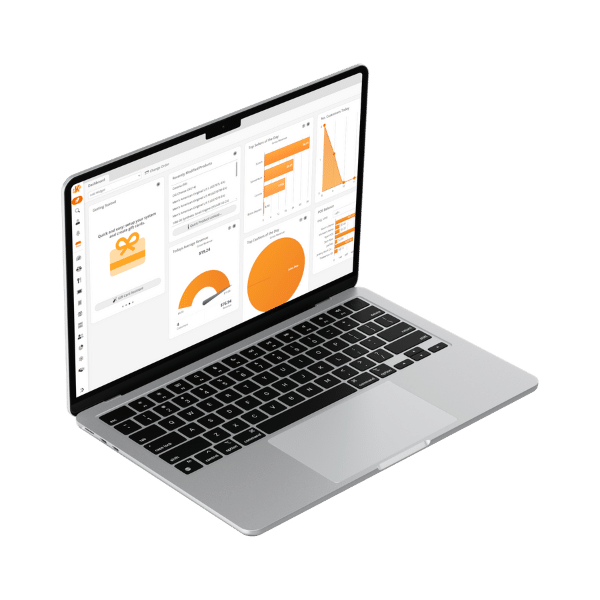
Speak with a product specialist and learn what KORONA POS can do for your business.
Frequently Asked Questions (FAQ)
Can inventory management be done in an Excel spreadsheet?
Yes, inventory management can be done in Excel using formulas and templates. However, it lacks real-time tracking, automation, and scalability, making it riskier and less efficient for growing businesses.
What is the most common inventory method?
The FIFO (First-In, First-Out) method is the most common inventory method. It ensures that older stock is sold first. It is widely used in industries dealing with perishable goods and helps maintain accurate financial records.
KORONA POS: Your Retail Inventory Management System
KORONA POS offers a robust, all-in-one inventory management solution tailored for retailers. With features like automated inventory management, real-time reporting, and seamless vendor management, it helps businesses streamline operations, reduce waste, and improve profitability.
Whether you’re managing a small boutique or a multi-location enterprise, Korona POS ensures accuracy and efficiency. Its cloud-based system provides instant access to inventory data, allowing for more intelligent decision-making.






